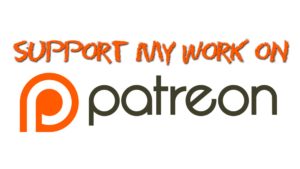Developing Conceptual Understanding
by Teaching Inequalities
The first time most students will be exposed to graphs, multiple solutions (solution sets), connecting algebraic expressions to English sentences, and what it really means that the Real Number Line is continuous all happens when they learn to graph inequalities.
This is a golden opportunity, as a teacher, to help students develop a foundation that will serve their mathematical progress for years to come! In episode 7 we discuss exactly that.
If you are interested in the PowerPoint discussed in the episode, please click the link below.
On Teaching Math Podcast
Episode 7
Show Notes
Introduction:
Hello and welcome to the On Teaching Math podcast. This is the podcast where we discuss all things related to the development of mathematical literacy in your students. Thank you for joining us once again. I am your host, Philip Brown.
In today’s episode we are going to talk about balancing procedural proficiency with conceptual understanding, and we will use a specific topic in basic Algebra for our playing field. But, before we do, let’s get to this week’s question:
This may seem to be a silly question to some, but I’ve asked this question of students at all levels I’ve taught, and it’s always been engaging. Is the number zero even, odd, or neither? Why?
As is the case with all of these questions, it is easy to understand and is approachable. This gives students a chance to think mathematically, to set hypothesis and test them, inching closer and closer to understanding.
I guess, just as is the case with high school education, the answer itself is of little importance. The experience, however, is pure gold.
Let’s get to today’s topic, shall we?
Suppose you taught Algebra 1 and were teaching students to graph inequalities in one variable. Now, suppose your school did common assessments and the data was discussed with the entire department. If your students did well, you’ll receive positive attention and praise, maybe even be asked, with an admiration, “Hey, how did you get your kids to do that well? What’s your secret?”
Now, let’s say your secret was something along these lines: You coached the students that if the “alligator,” didn’t have a line underneath its mouth, they’d draw an open circle. But, if the mouth did have a line underneath it, they’d draw a solid dot on the number.
Now, whichever way the mouth pointed will be the direction you shade. So if x is less than five, it will have a circle on the number 5 on the number line and be shaded to the left, because less than points left.
What’s not to love? Kids get the right answers, all is well, right?
Now, my next statement, emotionally anyway, is a resounding NO! Wait a minute, kids don’t know anything here, they’re just getting an answer from following a set of rules that can be understood entirely without any mathematical understanding. It is not any different than using a cheat sheet to navigate a video game.
While I believe that response is appropriate in this context, I also understand that sometimes this kind of things happens. It is bad teaching, just helps kids get answers. But, sometimes, kids getting the answer is important and it is enough. The question is, when is that the case, and when is there more at play?
I don’t want to overly labor your ear with making this point, so here it is, nice and pithy. If you’re teaching a topic in math that applies readily to other topics in math, then you could consider it somewhat foundational. If that is the case, literacy is pivotal to the long-term success of your students.
If, however, you’re teaching a one-off because it will be tested, and it has little connection to future learning, well, in that case it is one of those necessary evils.
Now, if you’re a purist at heart you’re probably ready to scream at me…no math is a one-off, it’s all inter-related. And I agree with you. A topic I teach as a one-off is variation. However, that topic involves writing equations, inverse operations and all sorts of great mathematical experiences that can promote the acquisition of algebraic fluency.
But, I have ended up treating it like a one-off subject because of the nature of the language used … inversely proportion and directly proportional to be specific. Now, I do know that my students learn to write equations well and they do develop algebraic fluency because I promote those things in other topics.
What I do with variation is quite simple. I teach the kids an if-then statement, followed by a series of steps. If they see direct proportion (or understand the relation to be of direct variation), they write y = kx. If it is inversely proportional, y = x/k. Then, they plug in the values, solve for k. Rewrite the equation, and use it to answer whatever questions follow.
It works GREAT. I spend a few days on it. Kids get it, they ALL do well and proclaim their love for the topic! What happens on the midterm and semester finals? That topic will inevitably have one of the lowest rates of students getting correct answers … even though they all “got it.”
You might wonder, Why teach it that way if you know the long-term result?
Well, it comes down to bang for the buck really. We have a very limited amount of time to spend teaching, not nearly enough. I know the students have the fundamentals in their tool box, if you will, but they forget the specifics. It is accessible, but they’re unlikely to retain the specific procedure for this application. It is a classic outline of exactly what it is I devote my efforts to fixing … that is, teaching math procedurally to the exclusion of mathematical literacy.
Now, I have incorporated a few new things that do not give the topic more time than it deserves over the past two years and the results have been better over time, but it is still an example of my hypocrisy.
The take-away is this. There are some things we teach procedurally because they’re just not worth the time. There are greater needs and we have limited resources. It’s triage I guess.
But … is triage always acceptable? Let’s consider graphing inequalities in one variable. I say that with this topic it is unacceptable. Here’s why.
- This is the first time students will graph. Graphing is hugely important and something students find very difficult.
- This is also likely the first time students will encounter situations with multiple solutions.
- The difference between the circle and the dot can only be understood if students understand that Real Numbers are continuous.
- The ability to translate from English to Algebra to a graph, and back, is something that will be revisited throughout their academic futures.
I’m sure there are more reasons that this topic is not a one-off, but that’ll do for now.
When we teach students to graph inequalities in one variable there is a lot at play. Students need to represent the meaning of an expression on a graph. A graph is a pictorial representation of a written statement. That’s a complicated task to perform.
Students also need to know what that the solid dot means that the number under the dot is included in the solution, where as a circle means all numbers up to, but not including, that number are included in the solution.
Students also need to understand that the shading signifies which numbers are, and which numbers are not, solutions.
Students need to understand that a solution is a value that resolves a statement, or makes it true. “A correct answer.”
Students will likely be confused as to why we are even graphing answers. When they solved x 2 = 7, and got x = 5, they didn’t graph. So, why now?
It’s a fair question, and one that most polite students would never voice.
The answer is that there’s no need to graph a single solution. The graph doesn’t make understanding the solution set any easier. Seeing the graph will not offer any additional insight into the situation.
However, with x + 2 > 7, we have a different story.
Let’s zoom out a bit here … get our feet on the ground, then I’ll offer some specific advice on how to help promote literacy in students with this topic.
I am arguing that sometimes we perform triage in the classroom, figuratively speaking, I hope. There are more topics to teach than there is time to teach them, and students come in with massive conceptual and procedural inefficiencies. So, sometimes we just get them through a topic so they can perform well.
However, over time, those tricks we teach them are lost. This is particularly important if all students are taught is tricks. They’ll lose nearly all of it over time!
The take-away is that math is not about procedures. It is a language, which means we can use it to gather information shared by another person, and can also share information through mathematics with other parties. The beauty of it is, the language is largely independent of verbal language!
Now, this is certainly a deep subject I’m going to touch on here, one of my most favorite things to learn about, too. But language encodes a lot of our memories. And when it comes to complex thought, it is entirely possible that without language complex thought it impossible.
So by getting students to understand the language of math, they’ll understand more accurately what is at play, and they’ll retain it that knowledge!
It is of utmost importance when planning out your curriculum pace that you determine which topics you’re responsible for teaching cannot receive simple triage. Which topics must receive appropriate time and care? That’s something that I think good teachers need to do. You might do so already, without realizing it.
I am going to put forth that graphing inequalities in one variable is one of those topics that deserves more than procedural approaches. Students need to understand the math and develop literacy with this topic. Here are some tips to move that along.
Start with an expression like: What number is less than five? That’s it, not a single math symbol… all written in words. Leave these statements written on the board.
Ask students to answer the question. As they provide answers, ask them which is the smallest? Which is the largest? For this situation there isn’t a smallest or largest. But there is an upper bound. The answers don’t go past five.
If you switch the question to say: What number is less than or equal to five? Well, now we have a new level of complexity. What does “OR” mean? Students will mix the meaning of “OR” with the meaning of “AND,” and not just here in math. I like to use the example of cleaning the room or doing dishes.
Ask the same questions about smallest and largest answers. You can play with variations of this, maybe even saying things like, “What number is more than 2 but less than or equal to 7?” Ask the questions about boundaries, smallest and largest solutions, and so on. Work through several of these situations, and don’t shy away from compound inequalities here.
As the students are discussing these questions with you, be sure to ask about fractions and decimals. They’ll likely, initially, limit their thinking to integers. It is most likely to come out when you ask about largest or smallest answers, but I just wanted to point out that likely students won’t think of fractions, decimals and certainly not irrational numbers.
Don’t shy away from some strange examples, things you’d almost never see at this level of math. For example, what number is NOT 2?
What number is farther away from zero than four?
What number is farther away from 5 than 2?
As you work through each question, have students compress, in language, their answers. Jot this below, leaving space, each written statement.
When they have a working understanding of the statements and their solutions you can go back and write the mathematical translation of each statement beneath the English statement.
Have students observe and comment on the connections between the algebra and the English. They’re both languages. The ideas between both statements in each language will contain the same meaning.
Once students begin to understand the symbols of inequality you can teach them that a graph is a picture of all of the answers.
Give them a simple example that matches one of the questions discussed earlier. But, don’t tell them what you’re doing. It is important to have them make that connection without your guidance. Once they do, have them help you graph another one of the statements. Then have them graph some inequalities.
Then, give them a graph and have them write the inequality.
Once all of this is done it is time to compress the learning for the day, for future reference. This will all be new, and they’ll forget. They’ll forget what less than or equal means, what the symbol looks like, and so on.
As you move through inequalities, it is a great idea to validate solutions to the inequality from the graph. For example, suppose the question to be solved and graphed was 2x + 1 > 0. Students solve the inequalities and graph it. Take a value that is on the graph and plug it into the original inequality, also take a value not on the graph and plug it into the inequality. The value on the graph should be a solution, while the other should not.
This is a very important process because it grounds their procedures and solutions in the concept at play, which you helped establish through the discussions of solutions and boundaries to solutions earlier on.
IF this kind of groundwork is laid, students will more readily understand linear equations, intercepts, slope as a relationship between x and y, and so on.
Triage is a necessary evil in our education system today. We have too many things to teach, not enough time. But not all topics are of equal importance because some topics have a deeper meaning at play. It is our job to make decisions regarding which topics we will give full and appropriate coverage to, and which we will rush through. It is unfortunate, but unless we can change the structure of modern public education, it is what we are left to deal with.
The part that frustrates me is that we are often blamed for that situation. That would be like blaming an army medic for a death toll on a battle field. That’s a dramatic metaphor of course, but appropriate. We are working within a broken system and trying to make the best of it for the students.
However, we can realize great outcomes for our students. We can teach a handful of things deeply, instilling literacy and understanding in our students. If we pick the right things, those other topics that received just triage, will be approachable and can be rediscovered by our students in the future.
I hope you’ve enjoyed this episode. If I caused you to think and reflect on your practices then I feel I’ve achieved my objective. If you found this podcast to be entertaining and enlightening, please give me a 4 star review on whatever platform you use for your podcast listening. If, however, you feel I’m not deserving of a 4 star review, please send me an email at: [email protected]. Let me fix the problem. I’m new at this and trying to make every episode better than the last.
Also, please visit my website: thebeardedmathman.com. There’s all kinds of exciting changes coming that I believe teachers and students will find useful.
I hope you have a wonderful week teaching. Until next time, this is Philip Brown, signing off!




